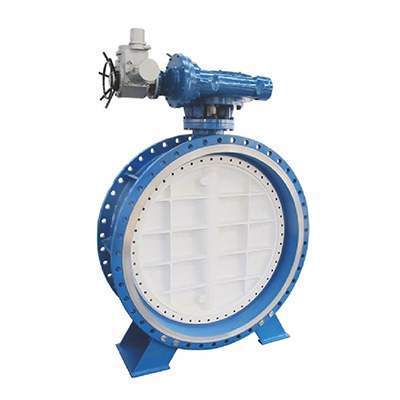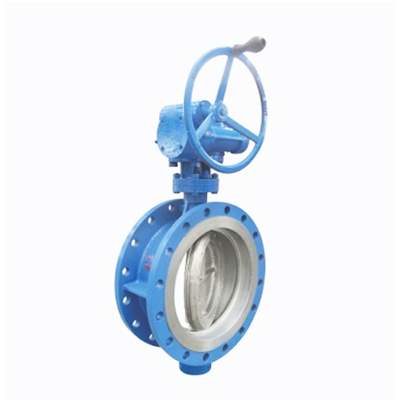Welcome to My Blog!
Before we dive into the content, I’d love for you to join me on my social media platforms where I share more insights, engage with the community, and post updates. Here’s how you can connect with me:
Facebook:https://www.facebook.com/profile.php?id=61563865935136
Now, let’s get started on our journey together. I hope you find the content here insightful, engaging, and valuable.
Introduction

Butterfly valves are a type of quarter-turn rotary valve used to regulate fluid flow. Their operation involves a disc rotating on a spindle within the valve body, controlling the passage of the fluid. They are simple in design and offer several advantages over other valve types, such as their compact size, lightweight construction, and ease of operation, making them a popular choice across various industries. This article explores the various types of butterfly valves available, discussing their features, applications, and advantages. Butterfly valves are widely used in various industries, including water treatment, chemical processing, oil and gas, and HVAC, playing a crucial role in controlling fluid dynamics.
What are the Types of Butterfly Valves?
Butterfly valves are broadly classified into two main types of butterfly valves: concentric and eccentric, based on the disc’s position relative to the valve seat. This classification significantly impacts the valve’s performance characteristics, including pressure rating, temperature range, and sealing capability. Understanding these distinctions is crucial for selecting the appropriate valve for a given application. Choosing the correct type of butterfly valve is essential for optimal system performance.
Concentric Butterfly Valves
Concentric butterfly valves, also known as resilient seated butterfly valves, are the most basic type of butterfly valve. In this design, the disc rotates about its center, which is also the center of the valve seat. This simple design makes them cost-effective and easy to manufacture. The disc is typically made of metal, and the seat is made of an elastomeric material, such as rubber or EPDM, providing a resilient seal. Concentric butterfly valves are suitable for low-pressure and low-temperature applications where a tight shutoff is not critical. They are among the simplest types of butterfly valves to understand and operate.
Eccentric Butterfly Valves
Eccentric butterfly valves are designed with the disc offset from the center of the valve seat. This offset, or eccentricity, is a key feature that distinguishes them from concentric valves and improves their performance. This design reduces the wear and tear on the seat and extends the valve’s service life by minimizing the rubbing action between the disc and the seat during operation. Eccentric butterfly valves are further classified into three types of butterfly valves: single, double, and triple eccentric, each with increasing levels of performance and sealing capability.
Single Eccentric Butterfly Valves
In single eccentric butterfly valves, the disc is offset from the center of the valve seat by a single eccentricity. This offset is typically located between the disc and the stem. This design provides a tighter seal than concentric butterfly valves and is suitable for medium-pressure and medium-temperature applications where some leakage is acceptable. They represent a step up in performance from concentric valves and are often used in less demanding applications than their double and triple eccentric counterparts. Single eccentric valves are one of the common types of butterfly valves used in industry.
Double Eccentric Butterfly Valves
Double eccentric butterfly valves have two eccentricities: one offset between the disc and the stem, and another offset between the disc and the seat. These two offsets work in conjunction to further reduce the contact between the disc and the seat, minimizing wear and improving the sealing performance. This design further reduces the wear and tear on the seat and provides an even tighter seal, making them suitable for higher pressure and temperature applications. Double eccentric valves are often used in applications where a more reliable shutoff is required. Double eccentric valves are among the more specialized types of butterfly valves.
Triple Eccentric Butterfly Valves
Triple eccentric butterfly valves have three eccentricities: two as in double eccentric valves, plus a third offset between the disc and the valve body. This third offset is crucial for achieving the tightest possible seal. This design provides the tightest seal and is suitable for critical applications where leakage is not tolerated, such as in high-pressure, high-temperature, and corrosive environments. Triple eccentric butterfly valves are often considered the highest performing types of butterfly valves.
Other Types of Butterfly Valves
In addition to the above classifications based on disc eccentricity, butterfly valves can also be classified based on their end connections, which determine how they are connected to the piping system. These connection types of butterfly valves influence the installation and maintenance procedures.
Wafer Type Butterfly Valves
Wafer type butterfly valves are designed to be installed between two flanges. They have a short face-to-face dimension and are lightweight, making them easy to install and maintain, especially in space-constrained environments. They are typically held in place by the bolting force of the flanges. Wafer types of butterfly valves are known for their ease of installation.
Lug Type Butterfly Valves
Lug type butterfly valves have lugs or threaded holes in the valve body that allow them to be bolted to the flanges. This design provides a more secure connection than wafer type butterfly valves and is suitable for high-pressure applications where a more robust connection is required. Each lug can be independently bolted, simplifying installation and allowing for easier removal for maintenance. Lug types of butterfly valves offer a more secure connection.
Comparison of Butterfly Valve Types
| Feature | Concentric | Single Eccentric | Double Eccentric | Triple Eccentric |
|---|---|---|---|---|
| Disc Position | Centered | Offset | Offset | Offset |
| Seat Material | Elastomeric | Elastomeric or Metal | Metal | Metal |
| Pressure Rating | Low | Medium | High | High |
| Temperature Rating | Low | Medium | High | High |
| Leakage | High | Medium | Low | Very Low |
| Cost | Low | Medium | High | Very High |
This table provides a quick overview of the key differences between the various types of butterfly valves, helping engineers and specifiers choose the right valve for their application.
Applications of Butterfly Valves
Butterfly valves are used in a wide range of applications, including:
- Water treatment plants: For flow control in distribution systems.
- Chemical processing plants: For handling various process fluids.
- Oil and gas pipelines: For isolating sections of pipeline.
- HVAC systems: For regulating airflow in ductwork.
- Power plants: For controlling cooling water flow.
- Food and beverage industry: For hygienic flow control of liquids.
Their versatility and ease of operation make them a popular choice across diverse industries. Different types of butterfly valves are suited to different applications.
Advantages of Butterfly Valves

Butterfly valves offer several advantages over other types of valves, including:
- Compact size and lightweight construction: Facilitating easier installation and requiring less support.
- Easy to operate and maintain: Requiring minimal training and simplifying maintenance procedures.
- Low pressure drop: Minimizing energy loss in the system.
- Tight shutoff (especially triple eccentric): Preventing leakage and ensuring system integrity.
- Cost-effective: Offering a competitive price point compared to other valve types.
These advantages contribute to their widespread adoption in various applications. Understanding these benefits is key to appreciating the value of different types of butterfly valves.
Conclusion
Butterfly valves are versatile and reliable valves used in various industries. Understanding the different types of butterfly valves and their applications can help you select the right valve for your specific needs, ensuring optimal performance and system efficiency. Careful consideration of the operating conditions, fluid properties, and performance requirements is essential for proper valve selection.
FAQ
Q: What is the difference between a wafer type butterfly valve and a lug type butterfly valve?
A: Wafer type butterfly valves are designed to be installed between two flanges, while lug type butterfly valves have lugs or threaded holes in the valve body that allow them to be bolted to the flanges. Lug type butterfly valves provide a more secure connection and are suitable for high-pressure applications.
Q: What is the difference between a concentric butterfly valve and an eccentric butterfly valve?
A: In a concentric butterfly valve, the disc rotates about its center, which is also the center of the valve seat. In an eccentric butterfly valve, the disc is offset from the center of the valve seat. This design reduces the wear and tear on the seat and extends the valve’s service life.
Q: What is a triple eccentric butterfly valve?
A: A triple eccentric butterfly valve has three eccentricities: two as in double eccentric valves, plus a third offset between the disc and the valve body. This design provides the tightest seal and is suitable for critical applications where leakage is not tolerated.
